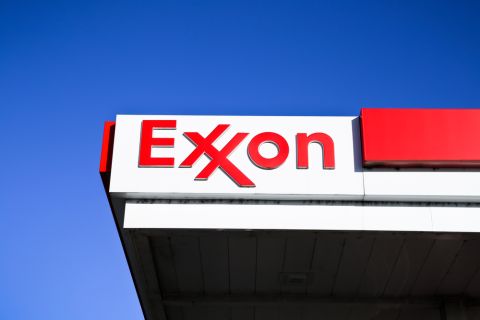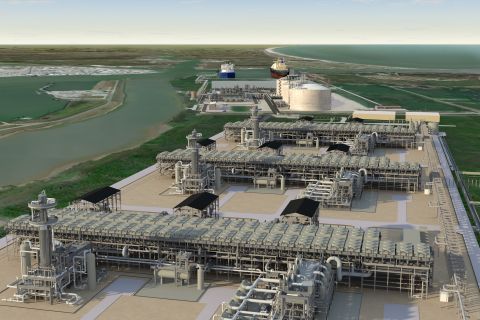Because oil and gas production appears set to decline in the North Sea, the U.K. government has liberalized its licensing and fiscal regimes in order to ramp up drilling activity, especially exploration. Some of the majors appear ready to let loose of some of their long-held assets. That's why U.S. and Canadian E&P companies see on the U.K. Continental Shelf (UKCS) a chance to replicate some of the success they enjoyed in the Gulf of Mexico 10 years ago. "The perception that the North Sea is mature is a false one, and one that is brought on by the reduction in drilling," says Brendan Keating, marketing manager for A&D advisory firm Randall & Dewey (UK) Ltd. "There has been very little focus on the stratigraphic targets-those fields that have been found in stratigraphic traps were mostly found by accident." Mature or not, production has fallen off, which motivates new players to see what they can do, whether in the southern gas basin or the central and northern oil basins. There are several ways to gain entry: licensing rounds for exploration or development of fallow blocks (undeveloped discoveries) and rejuvenation of abandoned fields, joint ventures with existing players, and acquisitions of assets or companies. Since 2000, an estimated 50 new companies have gotten their feet wet here, many through licensing rounds. Acquisition activity is also rising, but so is competition. Buyers from Asia needing oil supply and European utilities needing uncontracted natural gas are driving up asset prices, giving buyers a run for their money. "While there are a lot of buyers, we are not in a wholly one-sided seller's market," says Dave Fassom, managing director of A&D advisory firm Stellar Energy Advisors Ltd. "The strongest competition is for corporate deals, and early- to midlife production assets with a value above $50- to $100 million. "Below that size, there is a lot of expressed interest but less competition at the bid stage compared with the larger packages. High multiples over clients' holding value can be still be achieved with careful marketing but the buyers, and their financiers, are choosy." (Note: All dollar values in this article are U.S.) Just as there is no such thing as the perfect wave, there will never be a perfect midlife asset that generates perfect cash flow, therefore buyers and their financiers need to be more pragmatic and be prepared to take on the assets, Fassom says. Buyers and their financiers should ensure they have enough financial capacity before they bid, expect competition and, having reviewed the assets, make a bid-as opposed to waiting for a limited auction process-he says. Still, the UKCS is one of the most active areas for trading or buying assets outside North America, although buyers say deal flow is not as robust as in North America. In 2002, 16 deals closed totaling $1.3 billion, for an average implied value of just over $4 per barrel of oil equivalent (BOE), according to Paul Willcocks, managing director of advisory firm Harrison Lovegrove & Co. This doesn't count Shell's purchase of U.K. independent Enterprise Oil for $6.7 billion that same year. In 2003 the pace quickened, with 40 asset deals (600 million barrels of reserves) going for $2.4 billion, or an average $62 million per transaction, says Willcocks. Thirteen of the buyers were Canadian, nine were U.K. independents, six were U.K. start-ups, eight were European, three were from the U.S., and one was a major. "The market is so strong, you could almost sell anything. There is extremely high demand from companies with bulging current accounts [cash on hand], but it is hard to buy," he says. Nevertheless, at press time several large deals were announced. Intrepid Energy North Sea sold its 29.6% interest in EnCana's 1.1-billion-barrel Buzzard Field to Petro-Canada for $840 million. It sold its interests in the Flotta Catchment Area to Talisman Energy for $137.5 million. The area includes interests in Claymore, Piper and four other fields, the Flotta oil terminal and MacCulloch pipeline. From Italian major ENI, Canadian Natural Resources acquired majority-operated interests in the T Block (Tiffany, Toni and Thelma fields) and B Block (Balmoral, Stirling and Glamis fields), along with exploration acreage and production facilities. All produce light oil in the central North Sea and enhance the Calgary-based company's already strong presence. Earlier, ENI sold its interest in Markham Field. "This is significant as it shows how participation of some of the majors may evolve over time from being material operators to material non-operators," notes Simon Ashby-Rudd, managing director of advisory firm Waterous & Co., which advised ENI on both sales. "ENI still produces over 120,000 barrels a day in the U.K., but will now do it with under 100 people, versus 300 before the sale." Finally, Sumitomo paid $85 million to acquire Intrepid's interest in the Nelson and Howe fields. Waterous advised the buyer. M&A activity is not without its challenges. First, the U.K. cannot make a major drill, nor can it make that major sell. "With current oil prices producing strong cash flow, the majors have little or no incentive to release assets," says Ashby-Rudd. "They are more inclined to keep development assets and prospective acreage as an option value for the future. "The UK represents a large portion of the majors' OECD production, particularly for the Europeans such as Shell and BP. To ask them to exit the North Sea is a very difficult financial and cultural issue. That's why the sale of Forties Field to Apache [in 2003] was such a shock within BP." Second, frustrated U.S. independents lament that UKCS deal flow is not as robust as in the Gulf of Mexico. That may change as majors opt to sell some assets and deploy capital elsewhere. This summer, Shell's data rooms are open in Aberdeen, London, Norway and The Netherlands as it divests assets picked up with Enterprise. Third, the looming platform decommissioning liability that comes with a mature producing asset is a thorny issue, and one that is reflected in the final price per BOE. When BP sold Forties, only six large companies were invited to take a look, because they were deemed the only ones that could absorb such liabilities. If oil and gas prices were to fall, however, that would bring closer the decommissioning stage of a field-sure to be a catalyst for more asset sales. Start-ups funded by groups in Boston, New York, London, Edinburgh or Aberdeen are starting to play a bigger role. "The aggressive start-ups with a strong strategic requirement [to buy producing reserves] are forcing established independents to pay up in the rising market," Ashby-Rudd notes. Waterous estimates $20 billion of capital is chasing $2 billion of assets on the market, he says, adding it is not too late to enter the market. "But expect competition and don't expect a bargain." Abandonment liability There are about 140 existing license-holders in the North Sea, but nearly 60% of the acreage is held by the Big Four: BP, Shell, ExxonMobil and Total. Several companies have recently been net sellers, including ChevronTexaco, Amerada Hess, BG, Hunt Oil, Burlington Resources and Cairn Energy, says Iain Wright, vice president with Randall & Dewey (UK). The firm studied all assets producing less than 3,000 barrels a day to develop a list of possible fields for sale. This indicates there is about $5 billion of sales potential in 2004 and 2005, based on $4.50 per BOE and prices paid in the past year or so, says Keating. "The caveat is, this is our back-of-the-envelope estimate and not necessarily what the oil companies are going to do. But this gives you an idea of the potential size of the market." Although owners now see even their smallest properties as cash cows, "We believe they should start thinking of divesting when the value of remaining reserves is 1.5 times the cost of eventual abandonment," says Keating. Far fewer platforms have been abandoned in the UKCS than in the Gulf, so operators in the North Sea regard this as an important issue. Some sellers, such as ConocoPhillips, figure that in any sale, abandonment liability will eventually fall back on them anyway, because the government has the right to step in and push it up the food chain to prior owners. They have thus decided to sell producing assets now while asset prices are high-yet retain the liability, which means they can command a premium price per BOE. On the other hand, assuming abandonment obligations sounds like a poor deal for new owners. But if they buy mature assets, then add value by more drilling, smarter operating procedures and lower costs, they can postpone the day they have to face abandoning a platform and possibly create enough value to cover those costs. Observers say change is coming to the UKCS market, and eventually, to the Norwegian side, but it is coming slowly. Understanding the assets can be a challenge if done remotely, but opening an office in London and hiring local experts can be expensive. Still, the A&D players are optimistic. "There's a huge head of investment steam building. A lot of different buyers are out there with different business models and appetites. You've got big public companies with their own cash, bank financing, venture capital funds and now private and institutional equity wanting assets and companies to invest in," says Fassom. "There is a potential problem looming, however, as some companies are holding onto their mature production when they probably should be selling. It's almost as if sellers can't help but make hay while the sun shines, with the current oil price. The danger is that if they hold onto their producing assets too long, when they do decide to sell, there will be insufficient time for buyers to obtain financing and use their skills to add value to the asset. Hence, right now is the optimal time for sellers to bring their assets to the market and for buyers to build a substantial presence in this important oil and gas province."
Recommended Reading
Exxon’s Guyana Gas Project a “Win-Win,” Set for Hook-up by Year-end ‘24
2024-04-26 - Exxon Mobil Corp. CEO Darren Woods said the company’s gas-to-power project in Guyana as a “win-win proposition particularly for the people of Guyana” when completed and hooked-up by year-end 2024.
Segrist: The LNG Pause and a Big, Dumb Question
2024-04-25 - In trying to understand the White House’s decision to pause LNG export permits and wondering if it’s just a red herring, one big, dumb question must be asked.
Texas LNG Export Plant Signs Additional Offtake Deal With EQT
2024-04-23 - Glenfarne Group LLC's proposed Texas LNG export plant in Brownsville has signed an additional tolling agreement with EQT Corp. to provide natural gas liquefaction services of an additional 1.5 mtpa over 20 years.
US Refiners to Face Tighter Heavy Spreads this Summer TPH
2024-04-22 - Tudor, Pickering, Holt and Co. (TPH) expects fairly tight heavy crude discounts in the U.S. this summer and beyond owing to lower imports of Canadian, Mexican and Venezuelan crudes.
What's Affecting Oil Prices This Week? (April 22, 2024)
2024-04-22 - Stratas Advisors predict that despite geopolitical tensions, the oil supply will not be disrupted, even with the U.S. House of Representatives inserting sanctions on Iran’s oil exports.




